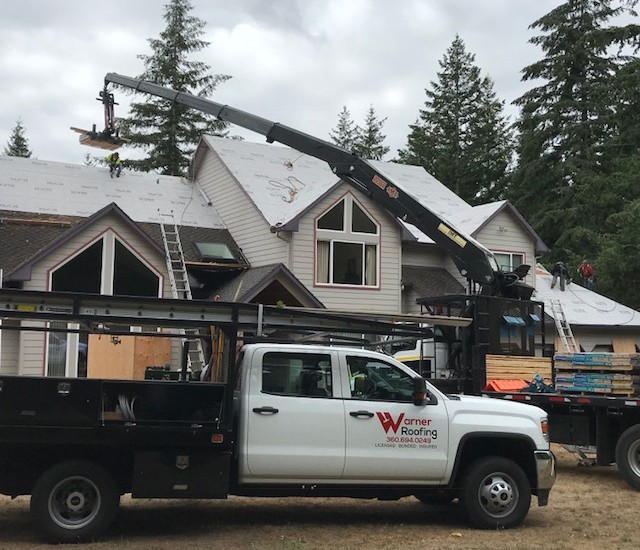
Published on May 3, 2019
Perhaps you’ve seen a roofing job in progress, either driving through your neighborhood or even around town. Crews moving up and down and side to side on the roof, installing decking, underlayment, or shingles. Sometimes, you don’t even need to see a roofing job to know when one is close by.
A familiar “tat-tat-tat” can be heard in the distance every minute or so. So you may be thinking: that’s a lot of holes to be putting into something that supposed to be watertight. It does seem counter-intuitive to put a bunch of nails into the different layers of roofing materials.
But there is a thought process to the nailing or stapling down of the different layers of roofing. And until an adhesive is created that can stand up to the Pacific Northwest rainy, snow, ice, wind, and sun, this is the best process possible.
Holding the roof together
It makes sense to use nails to attach the decking, or sheathing, into place. These pieces of plywood need something heavy duty to keep them from slipping off the roof. The nails we use are specifically designed for this job, made to keep from pulling away from the rafters being nailed into.
The waterproof sheets that go on top of the decking, often called underlayment, need a softer touch. Yes, the underlayment needs to be held tight, but remember a layer of shingles will be going over it. This is where a hammer tacker stapler is commonly used. It works fast and the staples are much sturdier than a normal office stapler.
Will the staples hold up during a week of heavy windstorms? Not at all. But they will hold the underlayment in place until the shingles are attached. The staples also hold the underlayment flat so folding that could affect shingle placement doesn’t occur.
Staples also lessen the chance of water actually getting to the decking. Sometimes cap nails are used in place of staples if the underlayment is going to be exposed for long periods of time or in high wind areas.
From there, the shingles are positioned and nailed into place. More nails! More holes! That’s okay, though: shingles are designed to cover up these nail holes. There are even nails specially made for the job. Short with wide heads, these nails are designed to keep from popping up and protect the puncture points.
Nails and Overhangs and Eaves
The process of installing a roof is the same in most cases. If the nail does go through the decking, it will only show if someone is hanging out in the attic. Even if the attic is a living space, they are covered up with insulation and then drywall.
Overhangs and eaves are a different story. Nobody wants to see a bunch of nail points protruding between eave rafters. In some cases, the overhang is covered to remedy the problem. If the overhang is covering a porch or deck, shorter fasteners can be used.
Steps are taken to make sure the points don’t ruin the aesthetics of the area. With a little planning, all of those nail holes won’t compromise the roof or the beauty of your home. Warner roofer is professional from start to finish – we know the roofing business and are experts in our field. Going the extra mile to provide a high-quality roof and excellent customer service.
Thinking of getting work done on your roof? Call us today. We look forward to hearing from you.